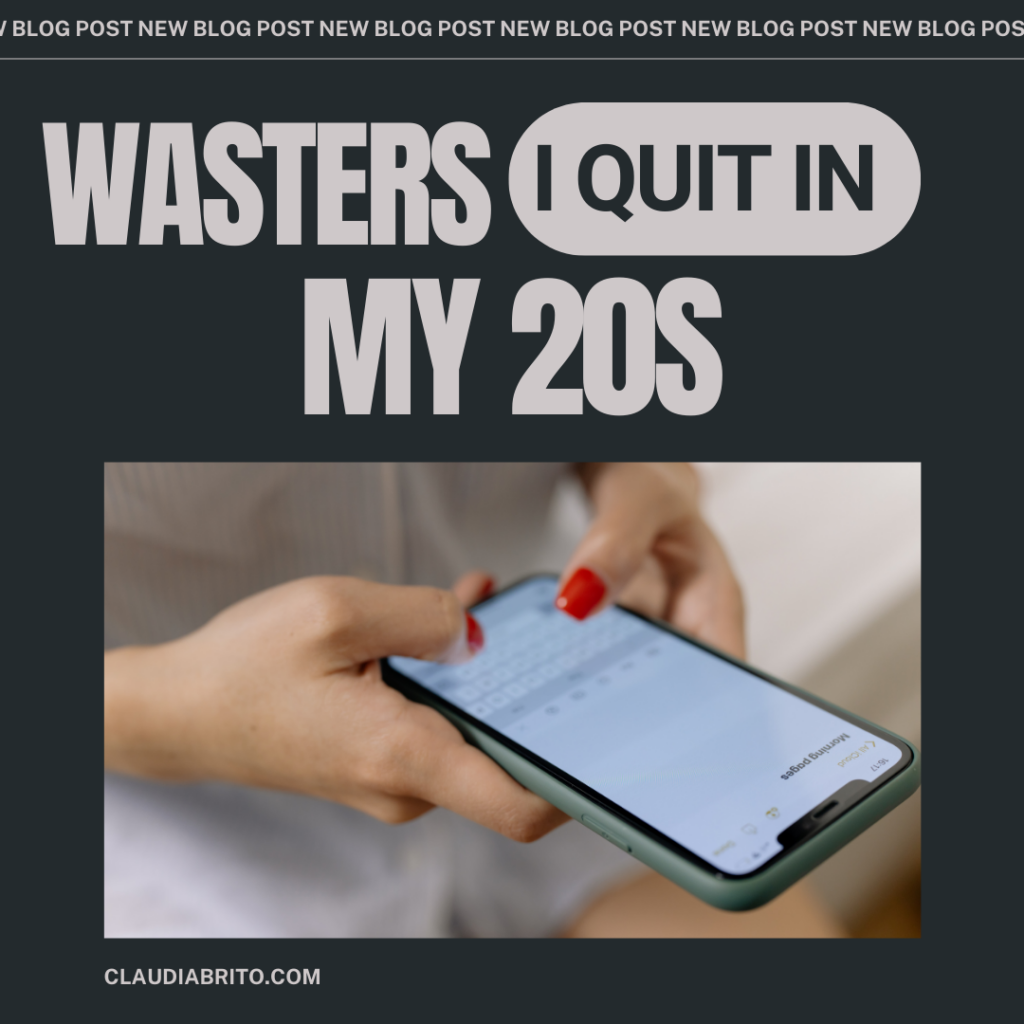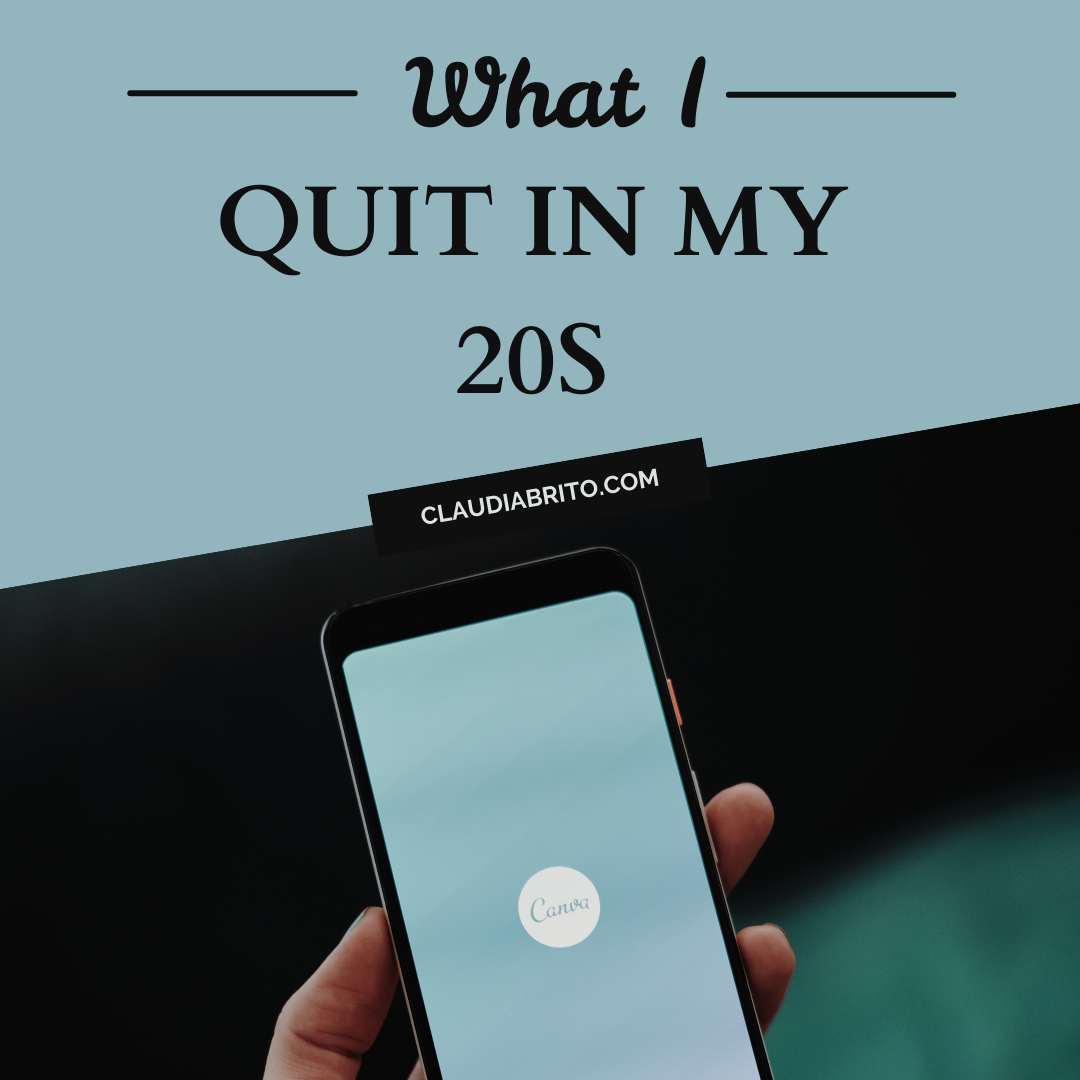Time in your 20s are supposed to be about finding yourself, exploring your potential, and laying the foundation for the rest of your life. But let’s be honest—it’s also the decade where a ton of time gets wasted. I didn’t realize how much I was sabotaging my own productivity until I started paying attention to the small, everyday habits that were eating away at my energy and focus. Once I started cutting out the things that were holding me back, I felt the shift almost instantly—not just in my work, but in how I felt about myself.
If you’re someone who constantly feels busy but rarely feels productive, chances are you’re tangled up in a few invisible time traps. Here’s what I let go of in my 20s that helped me stop spinning my wheels and actually get stuff done.

Social Media Scrolling That Felt Harmless (But Wasn’t)
I used to convince myself that a five-minute scroll on Instagram was just a little break—something harmless to “reset my brain.” But those five minutes turned into 15, then 30, then suddenly I was deep in someone’s vacation album from 2017 wondering where my own life was going. The dopamine hit of endless feeds had me reaching for my phone first thing in the morning and constantly throughout the day. It destroyed my focus.
The shift came when I started tracking my screen time and saw the numbers in black and white. I set time limits and used app blockers during work hours. Even more importantly, I started asking myself: Why am I opening this app right now? That one question was often enough to make me put the phone down and get back to real life.
Meetings That Could’ve Been Literally Anything Else
When I first started working in a professional setting, I thought attending every meeting made me look engaged and ambitious. But what I realized fast was that many meetings had no agenda, no outcome, and no real purpose. They were just calendar clutter. I often left them with less clarity than I had going in.
Instead of silently suffering, I started suggesting alternatives. Could we cover this in an email? Could we do a 10-minute stand-up instead of a 45-minute chat? It wasn’t about being rude—it was about valuing everyone’s time, including my own. Once I made this shift, I noticed my weeks opened up. I finally had blocks of time long enough to do focused work—and my output improved drastically.
Working Without Prioritizing (A Trap in Disguise)
One of the biggest time drains in my early 20s was working hard on the wrong things. I’d spend hours clearing my inbox or tweaking tiny details on a project while ignoring bigger, more important tasks. It felt like I was being productive, but I wasn’t actually making progress.
Learning how to prioritize properly changed everything. I started using frameworks like the Eisenhower Matrix to figure out what was truly urgent and important—and what could wait, delegate, or get deleted entirely. That mental shift helped me stop reacting to everything and start leading with intention. I finally stopped confusing busyness with productivity.
Putting Things Off Because They Felt Too Big
Procrastination isn’t just about being lazy—it’s about being overwhelmed. I used to put off big projects because they felt impossible to tackle. I’d wait until the last minute, panic, and then pull an all-nighter fueled by caffeine and stress. It was a cycle I knew too well.
Eventually, I learned to break tasks down into small, manageable pieces. Instead of “write a presentation,” I’d write the title slide. Then the intro. Then bullet out the main points. Once I saw progress, the fear shrank. Setting micro-deadlines helped too. If I gave myself 30 minutes to get started instead of expecting perfection, the task became doable. Taking action, even small, beat overthinking every time.
Letting My Phone Dictate My Mornings
For years, I started my day by checking my phone—texts, news, social media, emails. Before I even got out of bed, my brain was already scattered. I was reacting to the world instead of creating the tone for my day. It made me anxious, tired, and unfocused before I’d even poured coffee.
So I swapped that habit for a morning routine that worked for me. It didn’t involve a 5 a.m. wake-up or a 10-step wellness checklist. I started small: five minutes of silence, a glass of water, and planning my top three goals for the day. That alone gave me more clarity and calm than any notification ever could. Over time, I added a walk and occasional journaling, and those small habits built a rhythm that helped me actually enjoy mornings—and take control of the day before it took control of me.
Ignoring My Emotional Energy
Here’s something productivity gurus don’t always talk about: your emotions affect your output. I used to think I could power through stress, ignore burnout, or “just push harder” when I felt off. But the truth is, emotional clutter is just as distracting as a messy desk. If I was anxious or frustrated, I’d find ways to avoid work without even realizing it.
When I started doing regular emotional check-ins, everything changed. Some days I needed to take a step back, journal, go for a walk, or talk to someone. I also learned to set better boundaries around my time and energy—especially with people or tasks that drained me. Taking care of my mental state didn’t make me weaker—it made me more effective.
Final Thoughts: It’s Not About Hustling Harder
Looking back, the biggest lesson I learned in my 20s was that productivity isn’t about doing more—it’s about doing what matters, consistently and with intention. Cutting out time-wasting habits didn’t just help me get more done. It helped me feel more in control, less stressed, and more connected to what I actually wanted out of life.
If you’re feeling stuck or like you’re always behind, don’t default to working harder. Start by asking what’s silently stealing your time and energy. You might be surprised at how much space you can create just by quitting a few sneaky habits. It’s not about being perfect—it’s about being aware.
And trust me: once you stop wasting time on things that don’t serve you, you open the door to the stuff that really does.
YOU MIGHT ALSO LIKE
How to Choose the Best Hairstyle for Your Face Shape: A Comprehensive Guide
When choosing a hairstyle, it’s essential to consider your face shape to enhance your best features and create a balanced look. In this guide, we’ll explore the most…
4 min read
10 Quick & Easy Back-to-School Hairstyles for Busy Mornings
Mornings can be tough, especially when you’re rushing to get out the door in time for school. Between breakfast, packing your bag, and making sure you’ve got everything…
4 min read
Top 20 Trendy Teen Hairstyles: Easy and Stylish Ideas
Teen hairstyles are a big deal, and if you’re looking for the best teen hairstyles, this is the ultimate guide. Teen hairstyles are all about expressing personality, and…
4 min read
How to Manage Dandruff in Curly Hair: Expert Tips for a Healthy Scalp and Defined Curls
Curly hair and dandruff can often go hand-in-hand, with the unique structure of curly hair contributing to scalp issues. If you’re dealing with both unruly curls and dandruff,…
4 min read
Why Are Curly Hair Products So Expensive? Uncovering the Truth Behind the High Costs
Curly hair products often come with a premium price tag, leaving many wondering why and even myself. That’s why in this blog explores the factors that contribute to…
4 min read
9 Key Benefits for Conditioning Treatments for Curly Hair
Curly hair requires specialized care to maintain its health, definition, and shine. One of the most crucial aspects of curly hair care is the use of deep conditioning…
4 min read






